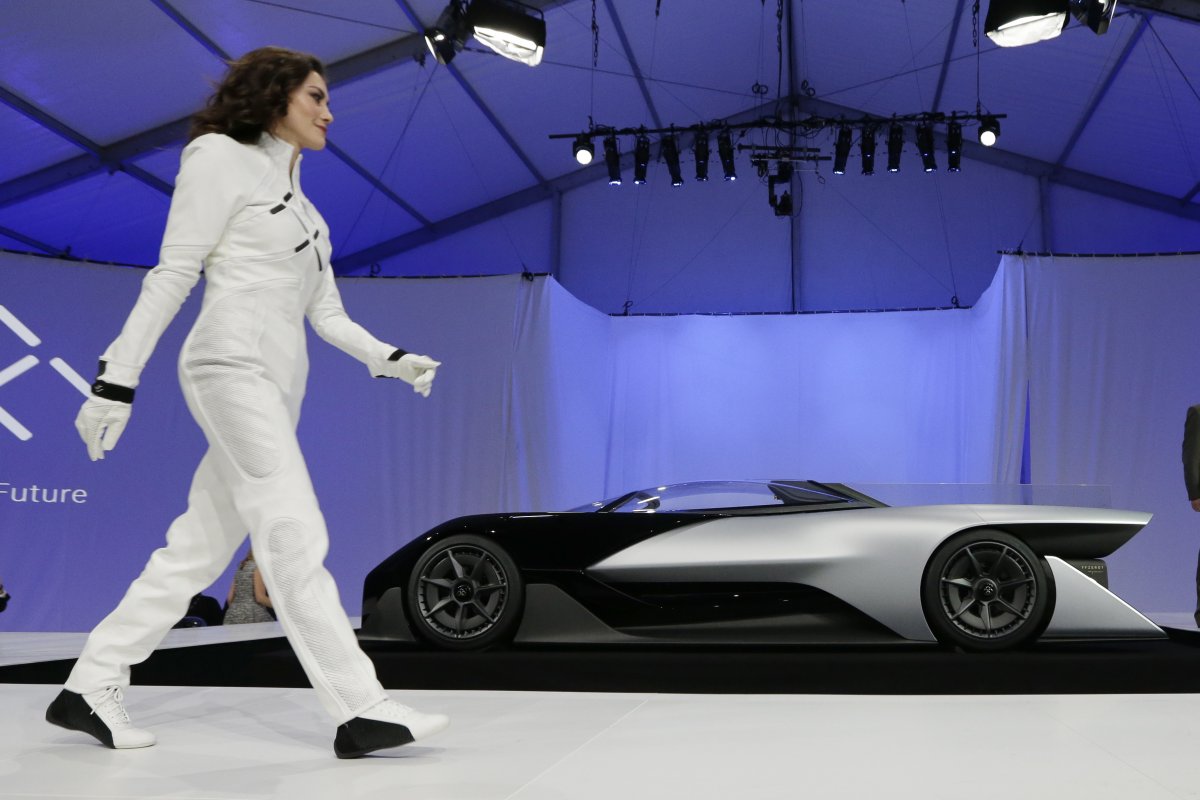JANUARY: “production hell” for the Model X, Wall Street wakes up, and Faraday Future arrives.

AP Photo/Gregory Bull
Tesla had some wind in its sails as 2014 got underway. The carmaker had just launched the Model X crossover SUV and was coming off its best-ever years for vehicle deliveries.
Shares had moved higher following the Model X’s arrival, and some newly bullish sentiment was building on Wall Street. But some new caution had also emerged. When Tesla was selling only two cars, as it had been with the Model S sedan and the outgoing Roadster, investors could look at the company as a fast-growth, high-risk, high-reward stock that could go to $500 a share.
Reality, unfortunately, bites. At the tail end of 2015, analysts seemed to collectively figure out that although Tesla was an innovative company who shares had risen over 1,000% at one point from the 2010 IPO, Tesla was also a car company whose future resided with building a lot of cars.The shock of this realization quickly set in.
“Tesla’s share price may very well increase dramatically over the next four years, as the company ramps up to the 500,000 yearly production target,” I wrote. “That will vindicate the calls being made by the biggest Tesla bulls and humiliate the bears.”
BUT!
“If anyone thinks that growth is going to be of the financially frictionless type that tech investors usually love, they’re got another thing coming. In fact, in order for Tesla to fulfill its current market cap, in terms of future value, the company is going to have to shovel billions into the enterprise.”
Some months later, Elon Musk would reveal that Tesla was in “production hell” at this time, struggling to iron out early production glitches and issues with the Model X, a vehicle whose design Musk pointed to as being an example of “hubris.”
Meanwhile, at the Consumer Electronics Show in Las Vegas, a mysterious new startup, Faraday Future, pulled the cover off an exotic eclectic concept car. Did Tesla have a new competitor on the stage?













